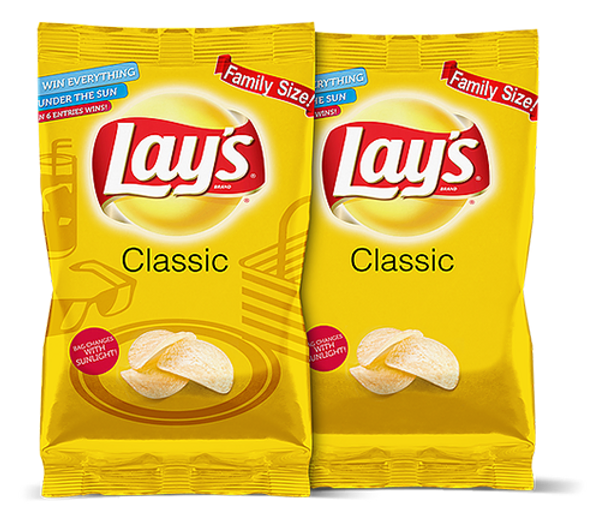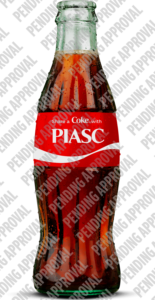
Special photochromic inks activated by UV light.
A recent article in PIASC’s Native.news publication, has an interesting article entitled, The Vanishing Tourist Postcard. In the article, the author explains, “Today, most people are happy to take their own photos rather than buying and sending postcards with pre-populated images.” While I completely understand the appeal of taking and sharing photos online, I think there’s more to a postcard than just the image. The truth is, there’s a distinct difference between digital and printed materials.
Printed Materials vs. Digital Materials
Depending on the condition, age, rarity, subject matter, and other factors, postcards printed in the mid-1800s can demand a hefty price. The oldest known picture postcard sold in 2002 for just under $50,000. This sale was no surprise to deltiologists who study and collect postcards.
Baseball cards are also highly-priced collectibles. A 1952 Mickey Mantle card sold at auction for $5.2 million in 2021.
Why are postcards and baseball cards demanding such a high price at auction? Because they are a physical object, a printed part of history.
Will today’s digital images ever become collectibles? Some are trying to elevate digital assets to the level of printed materials. Non-fungible tokens (NFTs) seem to have exploded out of thin air this year. An NFT is a digital asset representing real-world objects like art, music, in-game items, and videos. I have no idea if NFTs are worth the money. What I do know is print is a real-world physical object.
A postcard recipient is touching a tangible object containing a personal message from someone who took the time and effort to find, write, and send that postcard. The same goes for baseball cards, movie posters, comic books, first edition books, and many other printed ephemera. You can touch, engage with, and experience these printed materials. You should never underestimate the emotional connection that can be made through the power of touch.
The Impact of Touch on Humans
When thinking about the power of touch, think Apple. When you walk into an Apple store, you’re free to touch and play with all of their products. Apple aims to create a unique customer experience, while other computer stores have their products secured in boxes wrapped in cellophane. Apple knows that when you touch it, you feel a personal connection with the product. There’s something primal about the sense of touch.
Think of a young child when thinking about the primal nature of touch. A small child is fascinated when you give them your keys to play with, but when you want your keys back, what is the child’s reaction? “Mine, mine,” the child will say. Why? Because the child was holding, playing, and owning the keys. That sense of touch means, “this is mine.” Yet, Apple’s sense of touch goes beyond the store.
When you buy a new Apple product, like an iPhone, the packaging is all about your senses, your experience. The box engages your senses of sight, touch, and hearing. The box is clean, smooth, and made with thick, substantial paper. The way the top and bottom of the box fit tightly together, so tight that you can hear them rubbing against each other as you slide the box open. It’s a sensory experience.
The evolution of printing techniques created to engage the sense of touch goes beyond the primal sense of “This is mine.” Gloss, matte, and soft-touch coatings, embossing, or unique paper stock appeal to our sense of touch. Have you seen wood printing stocks? There are labels materials made from oak, birch, and cherry wood veneer. These have the texture and grain of wood, yet the surface is smooth enough for printing and converting.
Print is a Sensory Experience
Beyond postcards and product packaging, printing connects with humans on various sensory levels. And that connection can be profitable for brands. Research shows that media that appeals to more than three senses can increase brand impact and engagement by more than 70 percent. Thus print should be the media of choice.
It’s interesting to see how printing has innovated over the years to incorporate the senses of sight, touch, and smell into various forms of print media.
The sense of sight goes beyond a pretty picture. Printers can engage the sense of sight with specialty photochromic inks activated by UV light, so a splash of sunlight can cause a printed piece to burst into color. Indoors the packaging looks one way; then, when exposed to the sun, the packaging takes on a different look. Imagine the social media attention a bag of chips or a soft drink container would receive with packaging that changes right before your eyes.
Thermochromic inks are activated by heat. Imagine seeing a soda can and knowing if the contents were warm or cold. The use of thermochromic inks makes this possible.
The United States Postal Service (USPS) used thermochromic inks to commemorate the solar eclipse of August 21, 2017. USPS created a series of postage stamps where the black circle in the center of the stamp turns into an image of the full moon when pressed with a finger. This was made possible by using thermochromic inks.
The sense of sight is also triggered through the use of variable data. Coke® personalized labels in their Share a Coke campaign, and you can still personalize your bottles today for a special event. Click HERE to check it out. Variable data allows for personalization which encourages interaction and communication.
Through the use of print and a mobile device, augmented reality allows a wine label to come to life. I’m sure you’ve seen the 19 Crimes® series of wine bottle labels that tell the stories of the convicts pictured on the labels. The Walking Dead wine labels engage your sense of sight and your sense of hearing with their AR capabilities. If you haven’t interacted with these labels, you’re missing an exciting sensory experience.
Engaging the Sense of Smell
Augmenting the senses of touch and sight with the sense of smell will take a printed piece to the next level. Most of us have engaged with scratch and sniff technology on children’s stickers. The USPS introduced a line of scratch-and-sniff stamps with illustrations of colorful frozen treats in the summer of 2018. But this technology goes way beyond stickers and stamps.
If you’ve bought a new car recently, you no doubt enjoyed the new car smell as you drove around town. The truth is, that smell is manufactured. The original sources of the smell are no longer used in the production of automobiles, thus the smell you recognize as “New Car” is a scent that comes from a spray can and lasts about six weeks. Don’t worry, though, you can buy a plastic wrapped printed card coated with “New Car Scent” at most auto parts stores. Simply tear open the packaging and slide the card under the front seat of your car and enjoy that New Car Scent.
This scent coating technology goes beyond New Car Scent. Scented magazine inserts have been used for years in fashion magazines. These nice-smelling ads usually increase during the months leading up to the holidays as they promote gifts for a special friend or loved one. Still, the use of this technology goes beyond magazine publications.
You can add a scent to labels, packaging, direct mail, and more. I’ve read about a company that offers natural gas encapsulation on printed educational materials to help natural gas utility suppliers educate consumers.
Can You Taste a Printed Piece?
We’ve seen that print is truly a sensory experience. We can engage the senses of sight, touch, and smell with a printed piece, but can we incorporate taste? If you understand how our sense of taste works, it may be possible to incorporate it into a printed product.
Research shows that the way we perceive taste is a two-phase chemical reaction. One involves our mouth and throat (taste), and two involves our nose (smell). According to Leslie J. Stein, Ph.D., from the Monell Chemical Senses Center in Philadelphia, this two-phase chemical reaction is demonstrated in the difference between flavor and taste. You may think flavor and taste are the same thing, but hold your nose when you’re eating, and you’ll quickly draw a distinction.
“Most people think that flavor is the same as taste, but that’s not true,” says Stein. “The distinctive flavor of most foods and drinks comes more from smell than it does from taste.”
If what Stein says is true, could a consumer holding a direct mail piece that engages the senses of sight, touch, and smell actually “taste” the product? Could the consumer “taste” fresh cooked bacon? Would it be possible to taste a lemon pie?
Maybe I’m taking this too far. While the consumer may not be able to taste a direct mail piece, they will associate that piece and the brand it’s promoting with a culinary experience.
The Benefits of Engaging the Consumer’s Senses
Over the years, the printing industry has developed many innovative technologies to engage consumers’ senses. Printers looking to grow their market share should help brands understand and incorporate sensory marketing into their marketing efforts. A printed piece transcends the digital world when it engages the senses of sight, touch, and smell. It’s more than a picture on a mobile phone. The consumer develops an emotional connection to the piece. It becomes something special, maybe even a collectible.
Do you think the postcard printer in the 1840s ever imagined that the card running on his press would one day sell for $50,000? Did the press operator who ran the 1952 Mickey Mantle card ever dream that one day one of those cards would sell for $5.2 million? Probably not, but one thing’s for sure, a creative printed piece that engages the consumer’s senses will far outlast any digital object made today.


